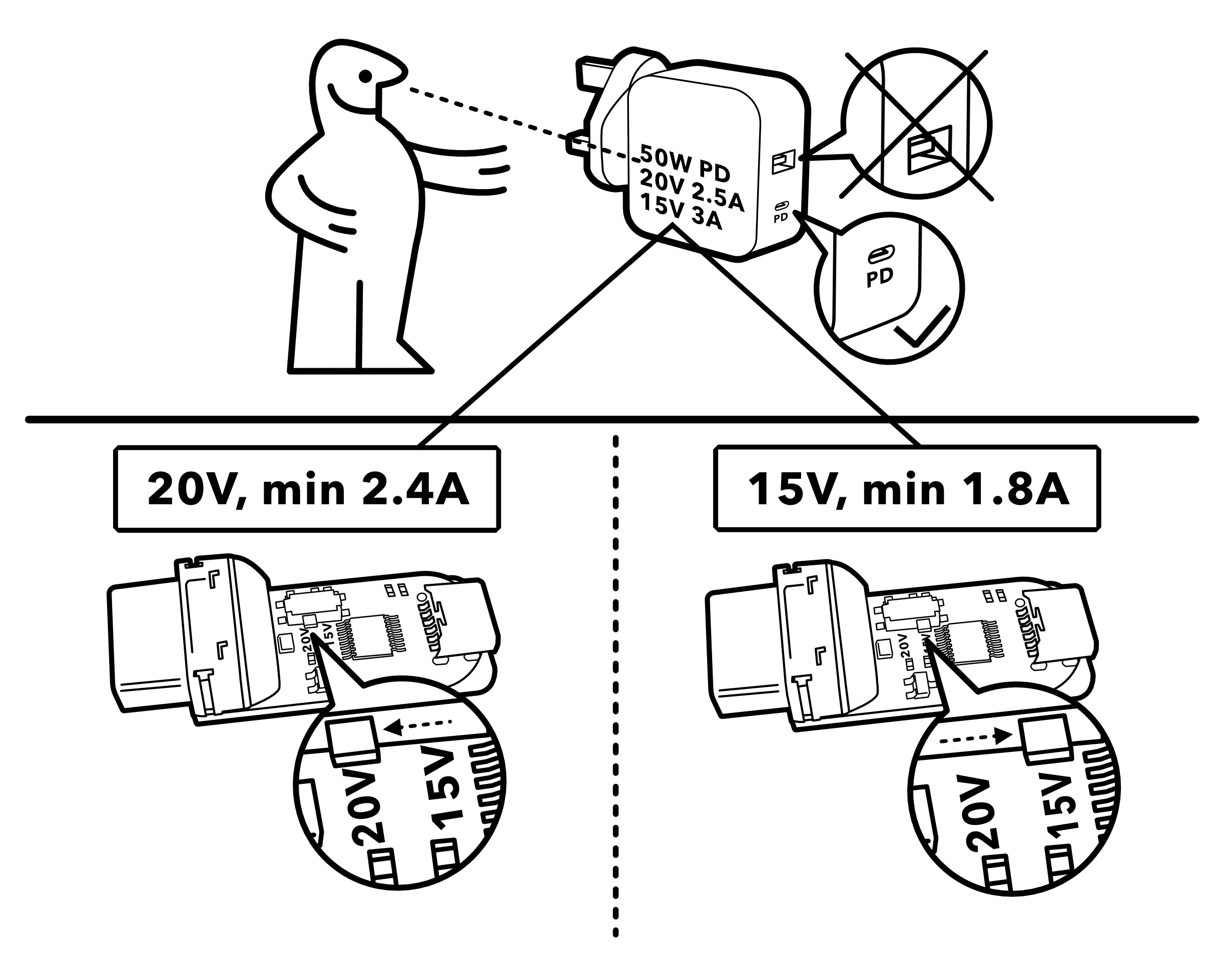Here at the Hackaday we’ve been enjoying a peculiar side effect of the single-port USB-C world; the increasing availability of programmable DC power supplies in the form of ubiquitous laptop charging bricks. Once the sole domain of barrel jacks or strange rectangular plugs (we’re looking at you Lenovo) it’s become quite common to provide charging via the lingua franca of USB-C Power Delivery. But harnessing those delectable 100W power supplies is all to often the domain of the custom PCBA and firmware hack. What of the power-hungry hacker who wants to integrate Power Delivery in her project? For that we turn to an excellent video by [Brian Lough] describing four common controller ICs and why you might choose one for your next project.

[Brian] starts off with a sorely-needed explainer of what the heck Power Delivery is; a topic with an unfortunate amount of depth. But the main goal of the video is to dive into the inscrutable hoard of “USB C trigger boards.” Typically these take USB on one side and provide a terminal block on the other, possibly with a button or LED as user interface to select voltage and current. We’ve seen these before as laptop barrel jack replacements and TS100 power supplies but it’s hard to tell which of the seemingly-identical selection is most suitable for a project.
The main body of the video is [Brian’s] detailed walkthrough of four types of trigger boards, based on the IP2721, FUSB302, STUSB4500, and Cypress EZ-PD BCR. For each he describes the behaviors of it’s particular IC and how to configure it. His focus is on building a board to power a TS100 (which parallels his TS100 Flex-C-Friend) but the content is generally applicable. Of course we also appreciate his overview of the products on Tindie for each described module.
For another angle on Power Delivery, check out this series of posts by [jason cerudolo], a perennial favorite. And don’t miss his classic project, the USB Easy Bake Oven.

















Helpful post summary, thanks for posting :-)
The Tindie overview is incomplete. He missed this one with the Cypress EZ-PD BCR CYPD3177:
https://www.tindie.com/products/pier42/usb-c-pd-sink/
Full disclosure: I am the author of this module.
Delivery in her project? > Delivery in her/his project?
Kerry must have had a female hacker in mind. It happens.
That, or Kerry (I don’t even know if that’s a male or female) is just trying not to exclude feminine hackers. It is unfortunate that English does not have a neutral-gendered third-person possessive pronoun. His/her is awkward, especially if you say it out loud, and neither “hisr” nor “hirs” is at all attractive.
Google it if you’d like – lots of discussion on this on stackexchange lingustics.
TLDR: you can use the formal “one” as in “one may do X”
you can use singular they as in “the student may take their homework”, which has a long history too
Some languages have introduced such pronouns lately, eg swedish just recently (<5years ago?) with 'hen' as a compliment to 'han' / 'hon'.
their.
“their” is plural. I know that’s how some people solve the problem, but it’s yet another awkward solution because you end up with number disagreement between the subject and verb. For example, “the informed hacker will want to use this chip in their project” is considered incorrect grammar and will be corrected in the comments, due to this disagreement in number.
@BrightBlueJim Singular they is not wrong and not new. Is 500+ years enough prior art for you? https://www.oed.com/view/Entry/200700
I usually just say they/them/their… Or where I am from you’s
I think the USB-IF went way overboard on PD. Since pretty much every device being powered by USB falls into one of two categories (1: devices that can operate directly on 5V, and 2: devices that need a switching regulator to get the voltages they really want), they should have provided for just 5V and 20V. Instead, every device in the second category not only has to re-regulate to its own requirements, but has to do so from a wide variety of input voltages. It’s fine that they provide negotiation for different current capabilities from the supply, but it’s just ridiculous that everybody has to support so many voltages.
But we’re stuck with what they came up with.
Warning: Many of the Author’s links on his YouTube and GitHub pages are money-making affiliate links, and they are properly flagged as such. However, if you are using a properly protected browser, to get the affiliate links to work you need to disable any sort of link-hijacking protection, which is “probably” safe in this case.
WARNING! This guy is trying to make money from his work! SHAME! SHAME!
Um, “Drone” didn’t say that..? He/she merely explained why the links aren’t working.
(Btw thnx Drone)
@mj said: “Um, “Drone” didn’t say that..? He/she merely explained why the links aren’t working. (Btw thnx Drone)”
@mj: Tnx for setting the record straight. In retrospect, maybe my lead-in should not have been “Warning”, but something softer like “FYI” – to avoid a possible angry response.
Regards…
On the other hand, why does a hobby always have to make money?
There are cables ready to power the TS100 from USB-C (with DC5521 Jack output), like these: https://fr.aliexpress.com/item/4000553939103.html . Works great.